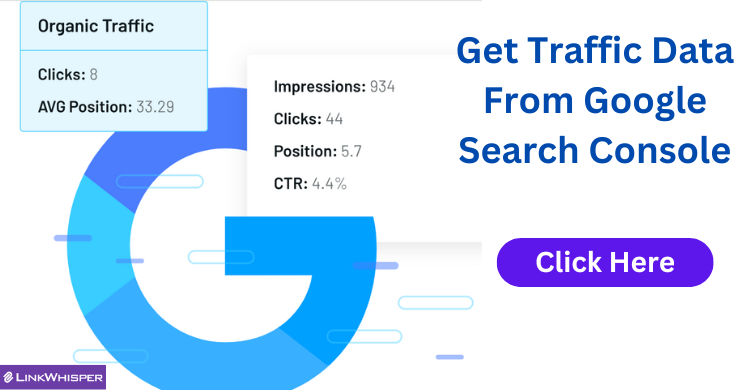What is partner marketing?
Partner marketing, or partnership marketing, involves a strategic alliance between different entities, such as two businesses or a business and an individual like an influencer or opinion leader, with the primary goal of achieving mutually beneficial objectives for all parties involved.
Why are these objectives important? Partners are commonly viewed as supporters of the businesses they collaborate with. Every business requires this reliable spokesperson to interact with current and prospective customers. Partners boost brand recognition and visibility, enhance lead generation, and assist in expanding the target audience.
Marketing partnerships vs. business partnerships
While both marketing and business partnerships involve collaboration between two parties, they are essentially the same at their core. Nevertheless, there are various elements that set these two concepts apart.
To begin with, a business partnership involves a legal association between two or more businesses or individuals, which is documented through a written agreement. There are three primary categories of partnerships: general, limited, and limited liability. All these forms necessitate official registration in the states where they operate.
Contrary to this, marketing partnerships do not necessarily require a legal agreement, and can instead be based solely on verbal understanding. To put it differently, a marketing partnership refers to a collaborative effort in the realm of marketing, which may or may not involve legal obligations.
Taxation is another significant aspect of business partnerships, as each partner is liable to pay income tax on the earnings generated from the partnership. The income tax for individual partners is determined based on their proportionate share of the profit or loss. However, in certain marketing partnerships, such as affiliate partnerships, the responsibility of filing income tax returns falls on the affiliates. Conversely, if we regard content collaborations as partnerships, no taxes are incurred as the value of brand visibility may not always be quantifiable in monetary terms.
In conclusion, the primary distinction between business partnerships and marketing partnerships lies in their objectives, time frame, and extent of legal obligations. Business partnerships are established to yield shared financial gain, whereas marketing partnerships may be temporary and prioritize long-term strategies, such as brand development, without expecting instant profits.
The main benefits of partner marketing
Although the primary advantage of partner marketing lies in monetary gain, businesses establish partnerships in order to acquire a larger customer base and boost sales. Nevertheless, we recommend examining marketing partnerships with objectives that extend beyond financial goals.
For well-established or fast-growing companies, marketing partnerships imply getting a more significant market share or better sales performance. And for smaller businesses, partnerships bring an opportunity to gain visibility in the industry they operate or target.
Partnerships can generate distinctive or supplementary customer value by merging the resources and expertise of distinct companies or individuals, leading to the creation of novel solutions and products, offering enhanced and expedited services, and fostering industry-wide growth. One instance is observed in numerous Saas companies that prioritize product development and expansion, leaving the service aspect to intermediaries who can often fulfill these functions more adeptly than the original producer, thereby augmenting the product’s overall value for customers.
By engaging in marketing partnerships, businesses can explore untapped territories and influence the placement and availability of their products. Considering that numerous businesses commence at a local level, forming partnerships serves as an excellent tactic to attract fresh customers within previously unexplored market segments.
Lastly, it is worth mentioning that a marketing partnership proves to be a budget-friendly option. Collaborating with others who bring novel ideas and expertise allows you to avoid expenses that would have been incurred from outsourcing third-party services. Additionally, many partnerships, including affiliate or influencer marketing, operate on a pay-per-performance basis, meaning you only make payment based on the achieved outcome.
Partnership programs like HubSpot’s have demonstrated immense success in generating demand. By collaborating with a company that offers a solution or service that complements yours and appeals to a similar customer base, you can capitalize on each other’s audience, credibility, and social presence to create mutual benefits.
To assist you in expanding your business, we have outlined our most effective B2B partner marketing strategies.
1. Establish Mutual Goals
To effectively implement a partner marketing strategy, it is crucial to outline your objectives and establish the essential metrics for measuring progress towards those objectives, similar to any other marketing endeavor.
The goals you set should be specific, measurable, attainable, realistic and timely. For smaller startup companies, your goal might be as simple as increased brand awareness, but as your business scales, your partner marketing activities might develop into shared lead generation and revenue streams. What’s important is that both partners are aligned on marketing goals; when you’re both working toward the same thing, your strategies will be that much more effective.
2. Ensure Careful Reporting
After setting your goals and determining the essential metrics to monitor, it is crucial to establish a reporting system that enables you to determine which partners are responsible for each lead. This becomes particularly significant when providing financial incentives. For instance, if you operate under a lead sharing structure, it is essential to accurately track the number of leads generated by each partner. Similarly, in a revenue share model, you must have precise information on how their actions directly impacted revenue growth, down to the exact dollar amount.
Ensure that you have the necessary tools and procedures to distinguish contacts obtained through referrals from contacts acquired directly by your company. By incorporating tracking URLs with customized UTM parameters, you can gain insights into the origin of partner-referrals, the specific channels through which these referrals are generated, and the co-marketing campaigns that result in conversions.
Partner management software such as PartnerStack is capable of automatically generating personalized tracking URLs, saving you the effort of setting up each URL manually. Having software that automates certain aspects of reporting and organization is crucial when dealing with a vast partner network.
3. Engage Guest Blogging
Utilizing guest blogging is an excellent approach to enhance SEO rankings, elevate online visitor numbers, establish trustworthiness, and provide added worth to your potential clients. By collaborating with subject matter specialists from each partner, both companies can mutually leverage their respective audiences, expanding their brand’s influence and informing their potential customers through new and pertinent content.
You should consider incorporating a guest blog into your editorial calendar at regular intervals, whether it be weekly, monthly, or quarterly, depending on the expectations and quotas you have established for your partnership. It is important to note that the shared blogs between partners should not only aim at promoting your brand, but also providing relevant and informative content for potential customers.
4. Co-Host Events
Partner marketing initiatives can benefit greatly from organizing events, as they prove to be highly effective and rewarding strategies. By harnessing the power of each other’s databases to promote the event, attendance and participation rates can be significantly boosted. In the case of a large-scale physical event, both your company and your partner’s company can jointly bear the costs, making them more economical compared to hosting them individually.
Moreover, events serve as a valuable opportunity to strengthen the partner relationship and establish a reputable presence in the market. For instance, our attendance at HubSpot events strengthens our prospects’ perception of our proficiency with the HubSpot platform.
5. Create Co-Branded Content
By now, it’s common knowledge that content reigns supreme in inbound marketing. A fantastic approach to enhance the value and reach of your content is through the creation of co-branded material, like e-books, white papers, or webinars, in collaboration with partner companies.
Collaborate with your partners to create valuable content that caters to both of your ideal customer segments in order to increase brand awareness and potentially expand into new markets. Keep in mind that the content should genuinely benefit your audience, so invest time in strategizing a remarkable co-branded content initiative instead of simply creating content for the sake of it.
6. Set Partnership Tiers
Various types of partnerships are more suitable for different companies, goals, and customer bases. There are five tiers of partner types, each demanding different levels of effort from the teams involved: Affiliate partnerships, co-marketing partnerships, referral partnerships, co-sell partnerships, and resell partnerships.
If your company is small or just starting out in partner marketing, you can try affiliate or co-marketing models and utilize non-monetary incentives such as lead sharing. By avoiding the need to attribute revenue, these models demand less effort from your team and allow you to assess the effectiveness of the partnership. However, if you’re a bigger company aiming to expand, securing co-sell and re-sell partnerships that have predetermined revenue targets will provide you with the desired outcomes.







